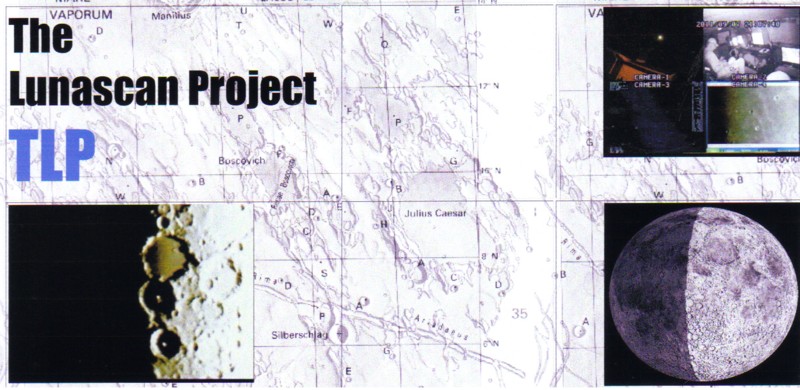
TCCM
Telescope
& Crew Control Module

|
TCCM
Telescope
& Crew Control Module
|

| Updated:
11 Oct 2020 After 15 years of operation from October of 1996, with the great but cumbersome 16" f/4.5 and STU (Scope Transport Unit) to April 4, 2011, the TCCM was operational. The first mission was number 45 and the last mission was 77 on July 20, 2014. There were 33 missions. The first three scanning missions used the LPI camera, and the next 30 were conducted with the new Celestron Neximage Solar System Imager (SSI) at prime focus with an effective ocular of 5 mm. The image sensor of the SSI is a 1/4" CMOS chip with a VGA resolution of 640x480 in full color. The scan rate is 30 frames per second. |
Fig. 2 Inside left
wall view
|
Fig. 3 Inside left wall right view |
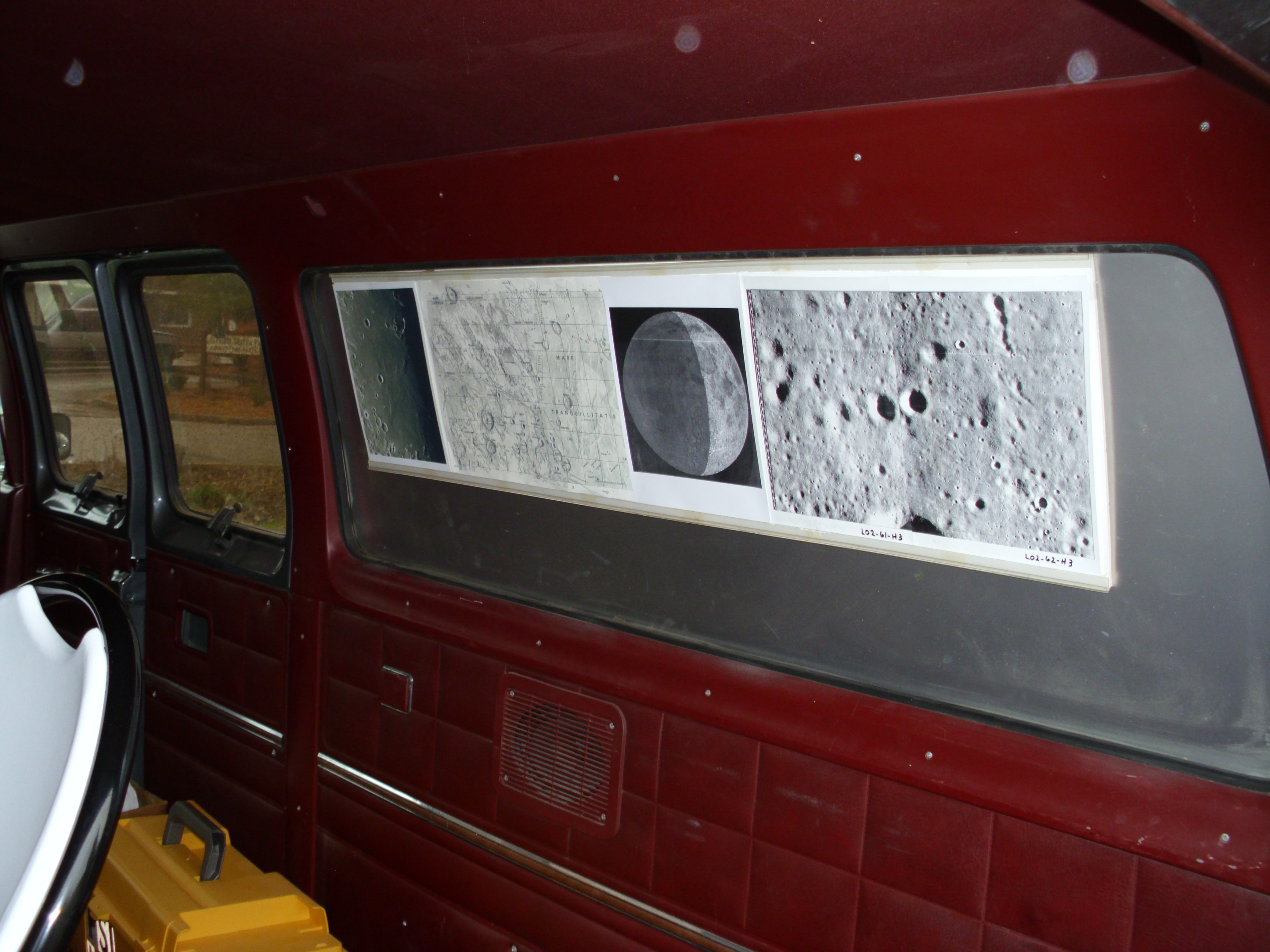 Fig. 4 Inside right
wall
|
| All
of the working equipment was mounted on the left side
so that two chairs had their backs to the right side
where there were some useful maps and charts.
Right behind the left front seat were three computers,
two shown here, and the DOB Driver guidance computer
mounted on the upper scope turret. |
Fig. 5. 8" f10, 2032 mm
f/l Celestron on DOB mount
|
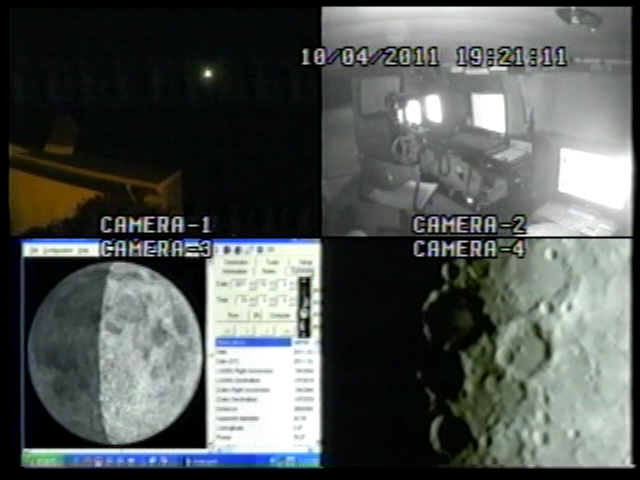 Fig. 6 Quad multiplexer view of all 4 cameras |
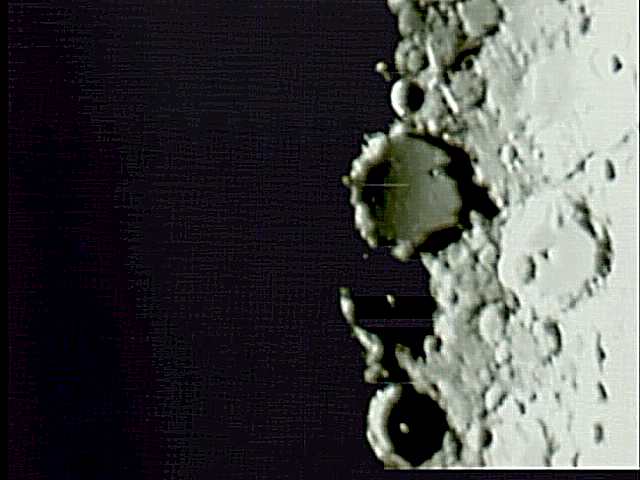
Fig. 7
LIVE SSI camera feed
|
| The
compact Schmidt-Cassegrain is mounted on a custom-designed
computer-driven Dobsonian mount. The four live images were
displayed on separate monitors and also on the quad
multiplexer display showing the findercam, the cabcam,
current VMA graphics, and the breath-taking SSI camera
view at a SIMRANGE of 600 miles and an FOV of 400 miles. |
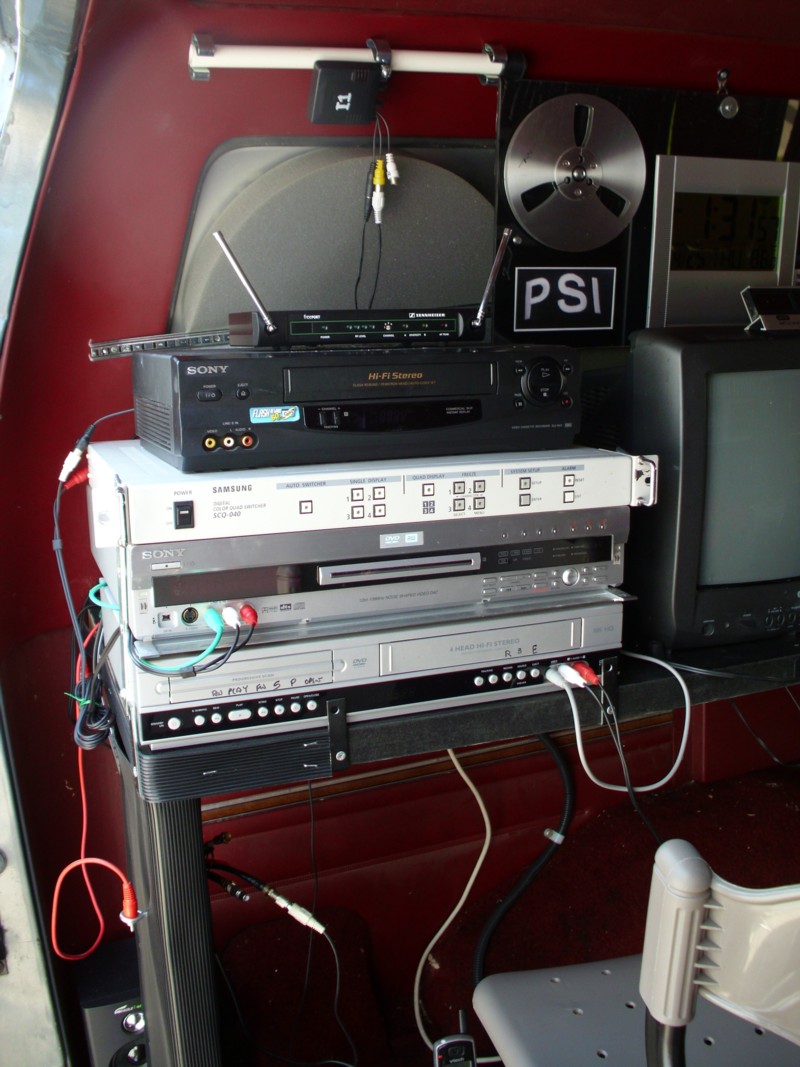 Fig. 8 Stacked electronics on
rack 1
|
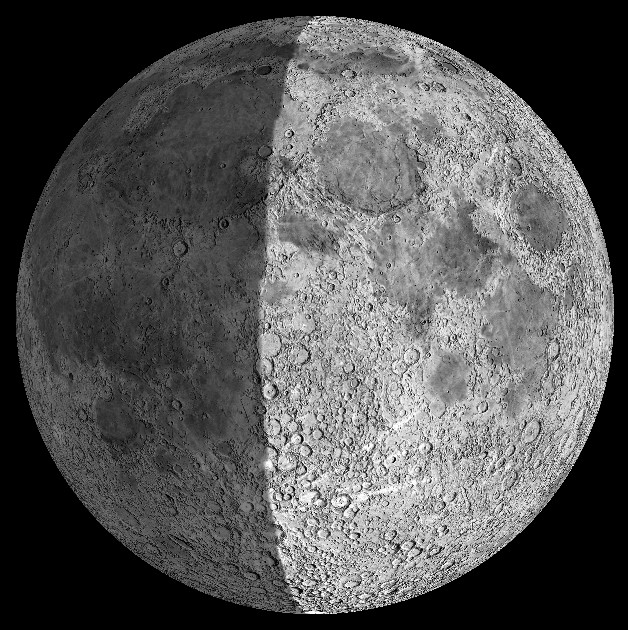 Fig. 9 Part of VMA (Virtual Moon Atlas) graphics cued up to the scanning time shows the target area right on the terminator on camera 3. |
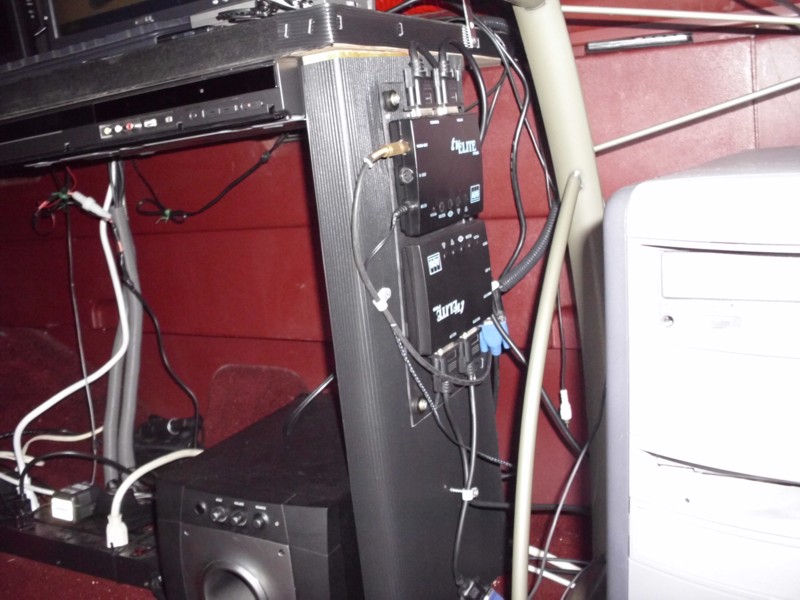 Fig. 10 Digital-to-analog
converters used to display and record images from the
programed sources.
|
| On
the far left of the console was the rack system with the
Sennheiser receiver, picking up the the WWV time signal
from the transmitter in the lab, the quad processor, the
DVR, and a VHS recorder. In the center photo is the
graphic representation of the current moon phase, but
without the Ephemeris and data normal shown on the right
side such as in Fig. 6. |

| This image on camera 4 was taken during mission 55 with the SSI camera and illustrates the stark contrast between the dark side as opposed to the daylight portion. The mission lasted over 90 minutes and was to study sunrise on the central peak of Alphonsus (bottom center) and possible LTPs as observed in 1958 by Russian scientists. The largest of the three craters is 95 mile-wide Ptolemaeus. The FOV is roughly 430 miles and the simrange at 400 power is about 600 miles. Part 2 of the mission can be viewed and studied on our YouTube site. |
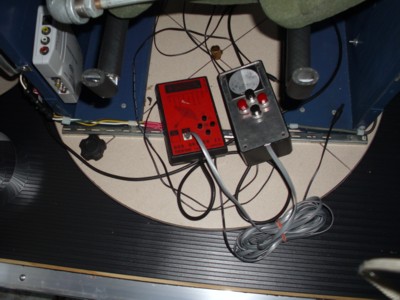 Fig. 12 The DOB mount upper turret plate with DOB Driver-II guidance computer and hand control. |